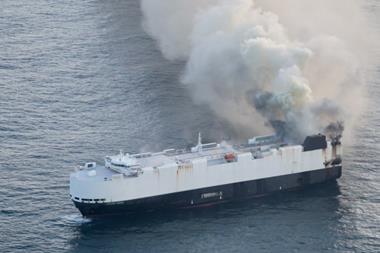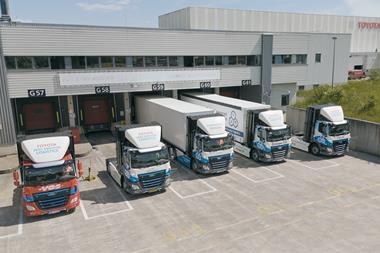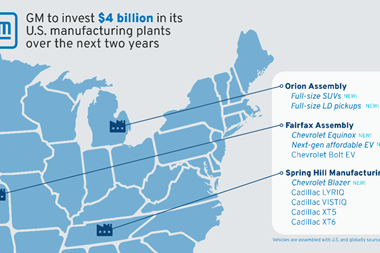 In its Q3 results, Ceva Logistics has reported that business wins in 2014 so far are up 20% year-on-year. New business in the Contract Logistics division has risen 19% and Freight Management wins increased by 20%, thanks to new automotive contracts in the last quarter. However, overall profits have fallen and the company has cut around 500 jobs, including at the senior level, as part of a reorganisation of its global operations. Adjusted EBITDA (earnings before interest, taxes, depreciation and amortization) in Q3 declined to €70m ($87.5m)
In its Q3 results, Ceva Logistics has reported that business wins in 2014 so far are up 20% year-on-year. New business in the Contract Logistics division has risen 19% and Freight Management wins increased by 20%, thanks to new automotive contracts in the last quarter. However, overall profits have fallen and the company has cut around 500 jobs, including at the senior level, as part of a reorganisation of its global operations. Adjusted EBITDA (earnings before interest, taxes, depreciation and amortization) in Q3 declined to €70m ($87.5m)
“The quarter saw automotive industry-related wins across multiple customers and geographies,” a spokesperson for the company told Automotive Logistics. “Examples include a large ground contract win in Brazil and a large automotive parts win in China. In Contract Logistics, there were two aftermarket parts distribution wins in North America for different customers.”
However, the company said that overall the Contract Logistics business wins were offset by “soft volumes” in the Asia Pacific automotive market, notably Australia and Thailand. Europe also underperformed in this sector. Overall Contract Logistics fell 4.8% in nine months, or 1.8% for the quarter, as a result of the company terminating underperforming contracts. This raises questions about the company’s performance, as Contract Logistics is traditionally a strong market for the company.
"Ceva is one of the most profitable operators in Contract Logistics with margins frequently above 5%,” said Thomas Cullen, analyst at Transport Intelligence. “It has a very strong position in the automotive sector. It is difficult to understand why its Contract Logistics business is suffering. Freight forwarding is under pressure because of the state of the market, and a number of Ceva’s rivals have done much worse, but Contract Logistics has previously provided stability for the company. It should be benefitting from growth in NAFTA, where it has recently cut out some previously unprofitable contracts, and its China joint venture is said to be highly profitable. If it is suffering in markets in South East Asia, this may reflect the difficulty of adapting to local conditions.”
Revenues in its Freight Management division fell 1%. “Tightening airfreight capacity on TransPacific trade lanes created [freight management] margin pressures in the quarter, offsetting the increase in volumes,” said the company in a statement.
However, it reported that Airfreight had delivered year-over-year volume growth of 5%, while Oceanfreight outperformed the market at 11% volume growth in the third quarter.
In total, Q3 revenue of $1,992m was up 0.7% on revenues from the last quarter, but both revenue and profits fell year-on-year because of high financing charges and growing debt. The company said it would report figures for Contract Logistics and Freight Management revenue at the end of the fiscal year.
The company also announced that it had reached a milestone in the freight management sector in Q3 with the implementation of its Matrix One Freight System (OFS) in Brazil. Colombia and Chile were included in October, and Argentina in early November. Freight management operations and finance functions globally now operate on Ceva’s global FM platform (with the exception of the US).
Local operating model
Ceva has announced that it is adopting a new operating model, which eliminates the existing region-based structures across the globe, replacing them with 17 local geographic clusters. The company said the model would drive increased network efficiency and productivity by eliminating duplicate work and functions, as well as strengthen communication across the business.
“We are announcing the transformation of our operating model to increase the velocity of our business by adopting a local, rather than region-based, operating model,” said Ceva’s CEO, Xavier Urbain. “For our customers, local ownership of execution is very good news, enabling faster decision-making and greater responsiveness to their needs.”
The company said the model had a number of business benefits including, “fostering an entrepreneurial spirit at all levels of the company and positioning Ceva to be a more responsive and innovative partner to [its] customers”.
This has led to around 500 job losses, with 150 in the Asia Pacific region. There have been some notable departures at the executive level, though Ceva refused to comment on any of them. As was reported last week, Dominik Tichelkamp, who was chief operating officer for Oceanfreight has left.
“It is essential that Ceva regains stability in its workforce, both at senior management level but also at the middle management level,” said Cullen. “The instability which resulted from the re-capitalisation was damaging to the company and it is essential to the capability of Ceva that it retains and strengthens its staff who design and operate its logistics systems."
NDC for Caterpillar dealer, Finning
In other news, Ceva has just won a major contract to operate a new national distribution centre on behalf of Caterpillar dealership Finning. The new centre consolidates activity previously handled across five separate locations.
The new Finning National Distribution Centre houses all of the dealership's engine stock, plus 60,000 separate product lines, all of which are required for next day delivery to the company's 800 field engineers and 28 UK and Ireland branches.
Ceva designed the purpose-built £8m facility, and is providing 33 staff to operate it over extended business hours six days per week. Under the contract, Ceva has committed to next-day delivery of all orders, for an expected overall traffic of some 10,000 items per week.
"The opening of this new distribution centre follows five months of hard work by my team and CEVA,” said Steve Smith, parts operations manager for Finning UK and Ireland. “The transfer of approximately 2m parts items from numerous storage locations, into one central facility was achieved, while of course retaining the level of service that our customers expect during the transition. This significant investment not only meets the needs of today, but also factors in plenty of capacity for our future growth plans."



































